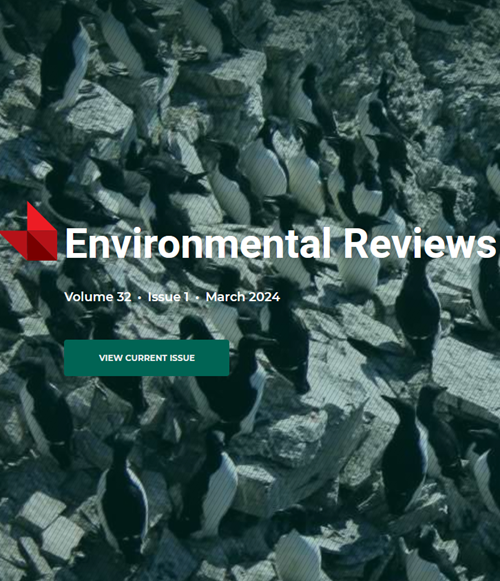北美动物区淡水贻贝(bivalia: Unionida)致死性耐热性的研究进展
IF 5.1
3区 环境科学与生态学
Q2 ENVIRONMENTAL SCIENCES
引用次数: 3
摘要
联合目淡水贻贝是目前北美动物区域中最濒危的生物群之一。面对由于气候变化和各种人为因素导致的地表水温度升高,准确的风险评估和有效管理策略的发展需要了解热极限。本文通过对北美区单孔贻贝(单孔目、Margaritiferidae科和单孔科)的系统文献综述,力求(1)按生命阶段和分类学对单孔贻贝的致死热耐受性数据进行总结,(2)探讨现有致死热耐受性数据对生态和气候变化的影响,(3)明确未来研究的需求。我们确定了联合科和Margaritiferidae科302种中只有28种的致死耐受性估计值。平均急性致死温度中位数为:舌虫(19种)32.8℃,幼虫(13种)35.0℃,成虫(4种)36.3℃。一般来说,glochidia的耐受性不如同一物种的幼虫或成虫,但也有一些例外。总体而言,Amblemini的急性和慢性耐热性最高,其次是Anodontini、Pleurobemini、Lampsilini和Quadrilini。驯化温度在不到一半(145个物种中的52个)的物种内比较中影响致死耐受终点。其他物种的致死耐受量数据,加上就地地表水温度的综合数据库,将有助于模拟北美超过致死极限的频率和持续时间,并查明目前生活在或接近其致死上限的种群。本文章由计算机程序翻译,如有差异,请以英文原文为准。
A review of lethal thermal tolerance among freshwater mussels (Bivalvia: Unionida) within the North American faunal region
Freshwater mussels of the order Unionida are currently one of the most imperiled groups of organisms in the North American faunal region. Accurate risk assessments and development of effective management strategies for remaining populations require knowledge of thermal limits in the face of increasing surface water temperature due to climate change and various anthropogenic factors. We conducted a systematic literature review of unionid mussels (order Unionida, families Margaritiferidae and Unionidae) in the North American faunal region to (1) summarize lethal thermal tolerance data by life stage and taxonomy, (2) discuss ecological and climate change implications of existing lethal tolerance data, and (3) identify needs for future research. We identified lethal tolerance estimates for only 28 of 302 species in the families Unionidae and Margaritiferidae. The mean acute median lethal temperatures were 32.8 °C for glochidia (19 species), 35.0 °C for juveniles (13 species), and 36.3 °C for adults (4 species). Generally, glochidia were less tolerant than juveniles or adults of the same species—but there were several exceptions. Generally, Amblemini had the highest acute and chronic thermal tolerance of all tribes followed by Anodontini, Pleurobemini, Lampsilini, and Quadrilini. Acclimation temperature affected lethal tolerance endpoints in less than half (52 of 145) of comparisons within species. Lethal tolerance data for additional species, combined with a comprehensive database of in situ surface water temperatures, would be useful for modeling the frequency and duration of lethal limit exceedance in North America and identifying populations currently living at or near their upper lethal limits.
求助全文
通过发布文献求助,成功后即可免费获取论文全文。
去求助
来源期刊

Environmental Reviews
环境科学-环境科学
自引率
3.50%
发文量
45
期刊介绍:
Published since 1993, Environmental Reviews is a quarterly journal that presents authoritative literature reviews on a wide range of environmental science and associated environmental studies topics, with emphasis on the effects on and response of both natural and manmade ecosystems to anthropogenic stress. The authorship and scope are international, with critical literature reviews submitted and invited on such topics as sustainability, water supply management, climate change, harvesting impacts, acid rain, pesticide use, lake acidification, air and marine pollution, oil and gas development, biological control, food chain biomagnification, rehabilitation of polluted aquatic systems, erosion, forestry, bio-indicators of environmental stress, conservation of biodiversity, and many other environmental issues.
 求助内容:
求助内容: 应助结果提醒方式:
应助结果提醒方式:


